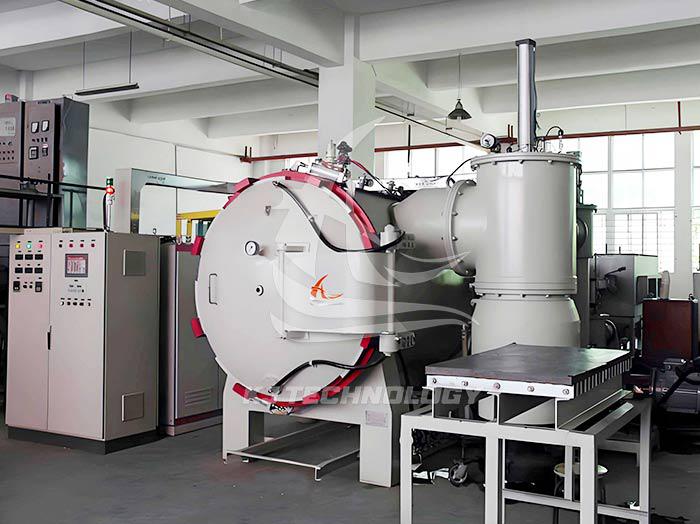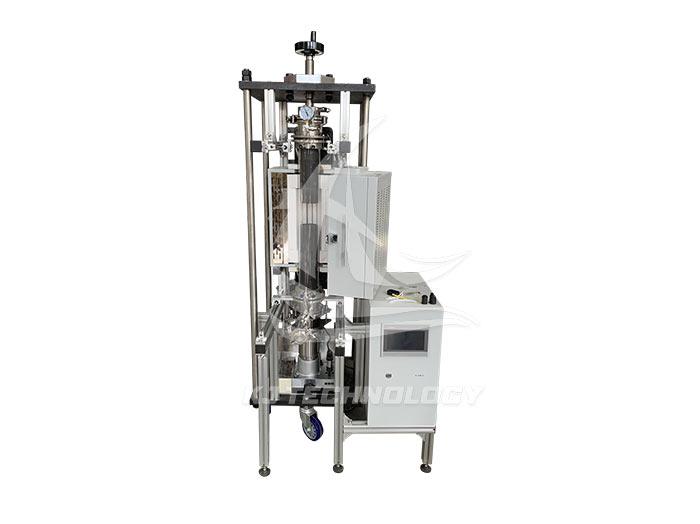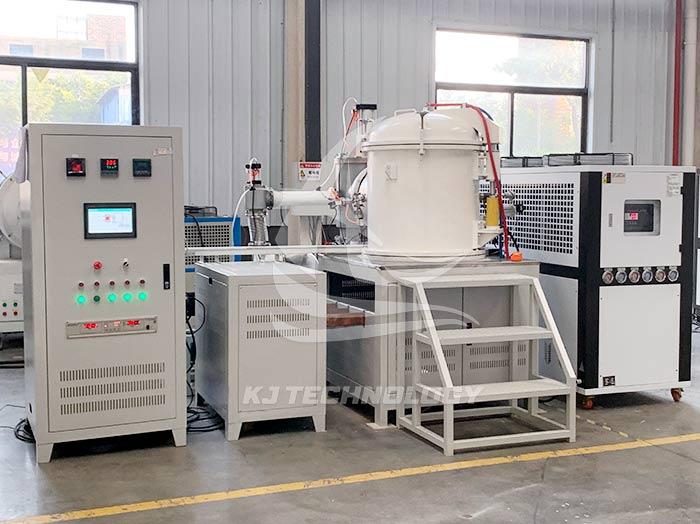What experiments can be conducted using a small vacuum furnace for experiments?
 10-21-2025 Author: KJ technology
10-21-2025 Author: KJ technology
The experimental small vacuum furnace can complete experiments such as metal heat treatment, ceramic sintering, semiconductor material preparation, composite material processing, chemical vapor deposition (CVD), nanomaterial synthesis, and high-temperature reduction reactions. Its core advantages lie in providing an oxygen free environment, high-precision control capability, and multifunctionality. The following is an explanation from two dimensions: material type and process type:
1. Experimental applications classified by material type
metal material
Vacuum Annealing: High speed steel cutting tools are annealed under vacuum at 500-650 ℃ to eliminate work hardening, improve surface smoothness, and increase hardness.
Vacuum tempering: Bearing steel is tempered under vacuum at 150-200 ℃, reducing brittleness and extending service life.
Vacuum brazing: Copper based alloys are brazed at 900-1000 ℃ under Ar gas protection, resulting in higher joint strength.
ceramic materials
Vacuum sintering: Alumina ceramics are sintered under vacuum at 1600-1700 ℃, resulting in an increase in relative density and bending strength.
Vacuum hot pressing sintering: Silicon carbide is sintered at 2000-2200 ℃ and 30MPa pressure, resulting in higher hardness and better wear resistance.
semiconductor material
Single crystal growth: Silicon single crystals are grown in the Czochralski method at 1420 ℃, with low dislocation density, and are used for integrated circuit substrates.
Thin film deposition: Silicon nitride thin films are deposited in vacuum CVD at 800-1000 ℃, resulting in better thickness uniformity and lower adhesion.
composite material
Metal based composite materials: Titanium based silicon carbide is vacuum hot pressed composite at 1500-1600 ℃, with higher interfacial bonding strength, used in aerospace.
Ceramic based composite materials: Carbon fiber reinforced carbon matrix is prepared in a vacuum impregnation carbonization cycle at 1000-2200 ℃, with a temperature resistance of 2200 ℃.
2. Experimental applications classified by process type
heat treatment process
Vacuum quenching: Mold steel is quenched under vacuum at 1050 ℃, resulting in higher hardness and smaller deformation.
Vacuum solution treatment: Nickel based high-temperature alloys undergo vacuum solution treatment at 1150 ℃, resulting in improved high-temperature strength.
agglomeration process
Powder metallurgy: Tungsten powder is vacuum sintered at 2800 ℃ to achieve higher density and stronger tensile strength.
Purification of optical materials: Calcium fluoride crystals are vacuum sintered at 1200 ℃ for higher transmittance and used in laser windows.
Chemical Vapor Deposition (CVD)
Functional thin film preparation: Gallium arsenide is grown in the vacuum vertical gradient solidification method (VGF method) at 1238 ℃, with good carrier concentration, and is used for high-frequency devices.
Protective coating: Tungsten carbide coating is deposited in vacuum CVD at 1000 ℃, resulting in higher hardness and improved wear resistance.
reduction reaction
Powder metallurgy reduction: Iron oxide powder is reduced at 1000-1200 ℃ in an H ₂ atmosphere, resulting in higher purity of iron powder and lower oxygen content.
Nanoparticle synthesis: Silver nanoparticles are prepared by vacuum evaporation at 1000-1100 ℃, with uniform particle size and excellent dispersion.
3. Key points of experimental parameter control
degree of vacuum
Metal heat treatment: ≤ 10 ⁻ ² Pa (avoid oxidation).
Semiconductor deposition: ≤ 10 ⁻⁴ Pa (reducing impurity pollution).
temperature control
Ceramic sintering: Heating rate ≤ 10 ℃/min (to avoid cracking).
Crystal growth: Slow cooling rate ≤ 5 ℃/min (reducing thermal stress).
Atmosphere control
Reduction reaction: H ₂ concentration above 95%, oxygen content<10ppm.
Protective atmosphere: Ar gas purity of 99.999%, dew point<-70 ℃.








